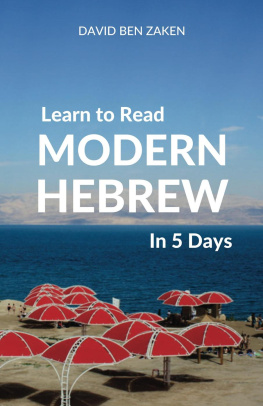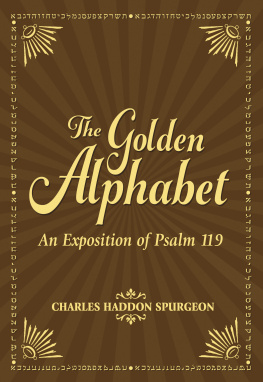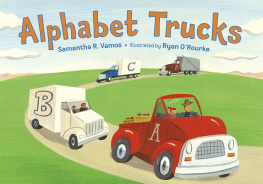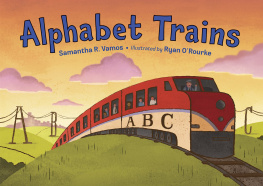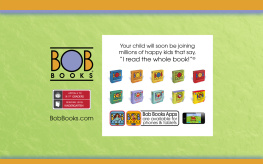Learn to Read Modern Hebrew in 5 Days By: David Ben Zaken Published by Wolfedale Press Copyright 2015 All rights reserved. No part of this publication may be reproduced, distributed, or transmitted in any form or by any means, including photocopying, recording, or other electronic or mechanical methods, without the prior written permission of the publisher. The cover image of Ein Gedi Beach, in Israel is licensed under cc by-sa 3.0. Author: Adiel lo www.wolfedalepress.com
TABLE OF CONTENTS
INTRODUCTION
L earning a new alphabet can be very intimidating for an English speaker only used to reading the Latin alphabet. This is partly why English speakers tend to stick to learning other languages that use the same alphabet, such as French, Spanish and Italian because they seem a lot easier! But learning a new alphabet does not have to be so difficult. Some alphabets, like Hebrew, can indeed be challenging for an English speaker.
However, the real difficulty is finding a good system to learn the new alphabet so that the student does not get discouraged and give up before making any real progress. Making progress in the language is the best motivator. The secret to learning a new alphabet is to be taught each letter separately, and then to practice how the new letters combine with letters you already know to read real words in the alphabet in a structured way. This is not revolutionary it is probably how you learned to read English but it is not easy to find for other languages. This book will teach you how to read the Hebrew alphabet in exactly that way, and with this method you will be able to read Modern Hebrew in only 5 days or less! After that you will be able to enjoy the Hebrew language and culture in a way that you were never able to before. THE HEBREW ALPHABET The Hebrew alphabet contains 22 letters and is written from right to left.
There is no difference between upper and lower case letters; however 5 letters have different forms when used at the end of a word. Vowels are not normally written in Modern Hebrew, although some consonants are used to represent long vowels. A system does exist to write all of the vowels. Called niqqud, this system consists of a series of dots and dashes written above and below the letters. This system is only used in special cases, however, such as in dictionaries and books for children, and not in normal publications. The lack of written vowels, and the fact that some letters can be pronounced in more than one way, make the Hebrew alphabet challenging for beginners; it is not always clear by looking at a new word exactly how to pronounce it and often a dictionary or native speaker must be consulted.
Remember, however, that this is also largely true for Modern English spelling and pronunciation and much like English, after some practice and a feel for the language, reading Modern Hebrew becomes much easier. The Modern Hebrew alphabet derives from a stylized square version of the Aramaic script that was used in the Persian Empire during the 3rd century BCE. This alphabet was also used in the Jewish diaspora communities around the world, and used to write the various Jewish vernacular languages that developed, such as Yiddish and Ladino. This course focuses on Modern Hebrew as spoken in the state of Israel. Despite this focus, the course will still be very useful for students interested in the Biblical form of Hebrew. After learning to read Hebrew with this course, reading Biblical Hebrew will come much easier the alphabet is the same.
HOW TO USE THIS COURSE The primary goal of this course book is to teach the reader to recognize the Hebrew alphabet and begin to read the Modern Hebrew language. The principal way this is accomplished is by teaching the individual pronunciations of each letter, and then utilizing Practice sections where the student can practice reading real Hebrew words. These Practice sections are very important and the main way the student will start to feel comfortable with the Hebrew alphabet. The answers to all Practice questions are included directly below the questions, but try to avoid looking at the answers until you have attempted to answer the questions yourself. Throughout the book, the reader will learn approximately 150 real Modern Hebrew words. These words were carefully selected to be of maximum benefit to beginner students of the language.
In the end of the book there are two glossaries one in thematic order and one in alphabetical order where one can study and memorize all the words learned in this course The course material has been designed to be completed slowly over 5 days, while reviewing lessons as necessary. You are encouraged to go at whatever pace you feel comfortable with and to feel free to go back to lessons to review as much as needed. Good luck and I hope you enjoy the first step on your journey to learning the Hebrew language.
UNIT 1 - , , ,
I n Modern Israeli Hebrew, the letter , called aleph, has no real pronunciation of its own and is used to represent the vowel that is attached to it. When a word begins with a vowel sound, it is always written with a in Hebrew. is also sometimes used to indicate a glottal stop, meaning a pause or a catch in the throat between two vowel sounds, like in uh-oh (IPA: //). is also sometimes used to indicate a glottal stop, meaning a pause or a catch in the throat between two vowel sounds, like in uh-oh (IPA: //).
This glottal stop will be represented by in the pronunciation in this book. The letter , called mem, is pronounced like the m in man or me (IPA: /m/). has a slightly different form, called mem sofit, when used at the end of a word. The sofit form is . The letter , called nun, is pronounced like the n in now or Nancy (IPA: /n/). also has a sofit form used at the end of words.
The sofit form is . The letter , called lamed, is pronounced like the l in little or like (IPA: /l/). Short vowels are not usually written in Modern Hebrew. This means that you often have to know how the word is pronounced before you can read it properly. This is not a problem for native speakers because they already speak the language. To illustrate what this is like for native speakers imagine if English followed the same principal.
Can you read this sentence? Modrn Hebrw is nt dffclt to read As you can see it is not too difficult - but this is a challenge for foreign learners of Hebrew, especially beginners. PRACTICE Try to read these English words in their Hebrew disguise. Remember that the words are written right to left and that short vowels are not written. The English words are given below. ANSWERS 1. lamb 3. Nana 4. lawn
UNIT 2 - , ,
T he letter , called yod, is pronounced like the y in yes or yellow (IPA: /j/). lawn
UNIT 2 - , ,
T he letter , called yod, is pronounced like the y in yes or yellow (IPA: /j/).
It is also used for the long ee sound in bee or the i in spaghetti (IPA /i/). Think of this letter the same as the English letter y which can be pronounced as a consonant like in yellow or as a vowel like in tiny. Also like the English y, when a word begins with it is always pronounced as a consonant. In this book this letter will be represented as either y or i depending on pronunciation. The letter , called gimel, is pronounced like the g sound in good or goose (IPA: /g/). The letter , called dalet, is pronounced like the d sound in dad or David (IPA: /d/).
PRACTICE Try to read these real Modern Hebrew words. The English translation is given next to each word. The correct pronunciations are given in the answers below. 1. (hand/arm) 2. (wine) 4. (sea) 5. (May) 6. (friend) 7. (man) 8. (boy) 9. (fish) 10. (lake) ANSWERS 1. yad 2. dam 3. yayin 4. yam 5. may 6. yadid 7. adam 8. yeled 9. dag 10. agam
UNIT 3 - , , ,
T he letter , called vav, is pronounced like the v sound in very (IPA: /v/). agam
Next page
